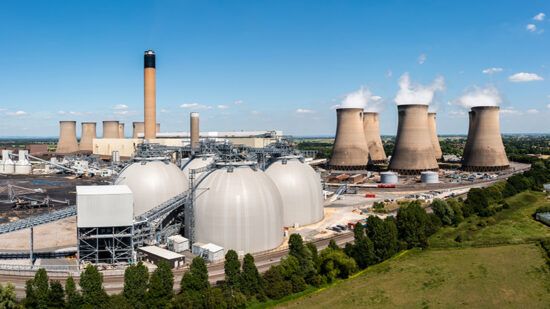Investors are not investing enough in climate-focussed investments to bridge the funding gap needed to tackle climate change, a report has suggested.
The research, ‘Rethinking Climate Finance’ by Swiss impact investment manager BlueOrchard, highlights the urgent need for private investors to develop portfolios that are more resilient to climate-related risks.
It also identifies important steps the private sector should take to upscale the funding needed to reach the targets of the Paris Agreement and UN Sustainable Development Goals (SDGs).
According to the report, published in collaboration with the University of Zurich, funds for global climate finance projects in 2017 reached $510bn, up 12% from 2016 and 50% from 2012 levels.
However, the paper warned this is far from the $16.8 trillion of investments needed until 2030, both in climate adaptation and mitigation terms, according to figures from the Global Green Growth Institute.
The report believes a strong partnership between private investors and the public sector is pivotal to tackling climate change.
“Both the public and private sectors need to increase their climate finance investments to reach the climate targets outlined in the Paris Agreement and SDGs,” the report concluded.
“Therefore, a partnership between the public and private sectors that maximises synergies and mobilises capital, while setting clear impact targets toward climate change adaptation and mitigation, is crucial. Without it, achieving the Paris Agreement targets and SDGs is at risk.”
Climate adaptation finance totalled $22bn in 2016 and represented merely 5% of total flows that year, falling worryingly short of the estimated $210-300bn needed each year between 2010 and 2030, according to the 2018 United Nations Environment Programme (UNEP).
BlueOrchard’s report found reasonable commercial incentives exist for the private sector to increase its engagement in climate finance.
“Natural catastrophes can affect companies directly, disrupting their production. At the same time good opportunities exist from new adaptation and mitigation products sold in large markets.
“However, a lack of strong business models, little knowledge of adaptation and mitigation activities and high-risk perceptions limit additional private-sector engagement,” the report said.
The paper points to blended finance products to help mobilise public and private investments into poorer economies. Typical examples include structured funds in which different investors have risk and return incentives to match their investment appetites.
BlueOrchard also conducted a survey among private investors as part of the report, and asked respondents to identify the major barriers to investing more in climate finance.
The respondents, featuring respondents from Asia, Australia and Europe, cited government policies and incentives’ inconsistencies, the perception of lower-return opportunities, and risks perceived in sectors such as renewable energy and energy efficiency as the top obstacles.
However, 80% of investors said they consider blended finance as a suitable instrument to overcome these barriers.
“Through the collaboration with the Finexus Center for Financial Networks and Sustainability, we are able to provide our partners and investors with a systematic analysis of the rationale of private financial actors to start assessing climate change risks and take advantage of their opportunities,” Patrick Scheurle, chief executive officer of BlueOrchard said.
“Our aim is not only to provide meaningful insights and guidance related to climate finance but also to send a strong signal that action regarding to climate finance is much needed and of highest importance,” Scheurle added.








